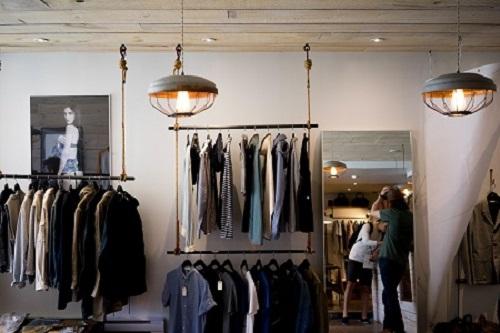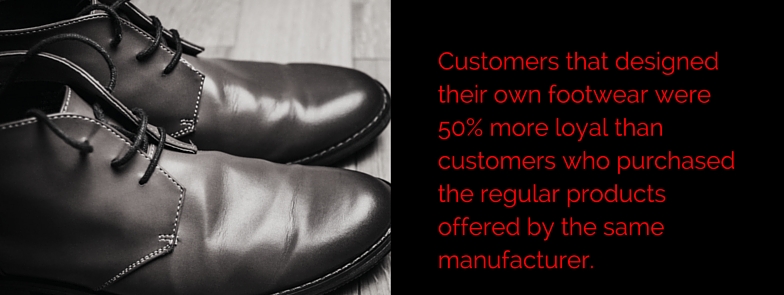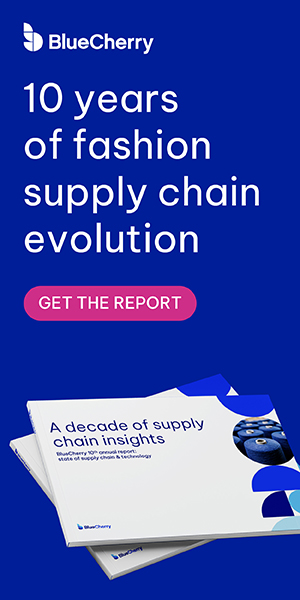Topics
Have It Your Way: The Rise in Consumer Customization

Technological changes in recent years have thrown us into a new era of consumer customization. Even though customers have had the ability to create customized items online for years, in many or most cases customization wasn’t practical enough for widespread consumption. The e-commerce sites that sold customized products had limited options, so consumers in search of more personalized products had to meet with a salesperson.[1] With the recent availability of advanced product configuration software and consumer-friendly customization technology, self-service product customization has become much more viable across price points.
Companies taking on the trend have reached an audience known for their unpredictability: Millennials.[2] Customization suits the generation’s ever-changing preferences by providing them with personalized products that can match what’s currently trending, on social media or elsewhere.
A 2013 Bain Insight survey revealed that customers were more engaged if they customized a product online.[2] For example, customers that designed their own footwear were 50% more loyal than customers who purchased the regular products offered by the same manufacturer. Ken Seiff, the executive VP of direct and omni-channel marketing at Brooks Brothers, claims that “In general, customers who buy customized products are more satisfied and are more valuable.”[2]

source: bain
How Technology Powers Consumer Customization
3D scanners have revolutionized the apparel manufacturing industry by making custom-fitted clothing easier to produce.[1] The scanners can quickly assess the measurements of the human body to create corresponding 3D models. These models can be used to produce clothing that fits better than hand-measured garments. As 3D scanner technology continues to advance, custom-made apparel is becoming cheaper and more accessible.
For some consumers, having so many options to choose from can be overwhelming. To facilitate a smoother and more focused customization process, many companies have invested in software that provides consumers with recommendations.[1] The software offers suggestions based on what is popular among other consumers. For example, the website eatmychocolate.com, which was developed by Chocri, allows consumers to custom-make a chocolate bar that will be delivered to their home. With four base chocolates and 100 toppings to choose from, consumers rely on the recommendation engine to make suggestions. Chocri edits the recommendations for taste to prevent consumers from ordering a product they will be unhappy with. The software has increased Chocri’s rate of conversion from people configuring their chocolate bars to ordering the bars by over 30%.[1]
Some companies use dynamic pricing as a solution to the long wait time that comes with customization. If certain features are more time-consuming to produce than others, a company can increase the price of that option.[1] As a result, fewer consumers will choose it and production will move more quickly. Additionally, the company can increase prices if there is a large buildup of products waiting to be customized. Companies using dynamic pricing have witnessed faster delivery times and greater customer satisfaction.
Businesses have sprung up to solve one of the greatest challenges for companies specializing in customizable merchandise: finding a way to convert a single customized order into an assembly list for warehouse and production personnel.[1] The software these companies have developed provides both producers and consumers with greater visibility. Not only are producers aware of what is being assembled, but consumers are also conscious of the progress of their order and how much time it will take to assemble their product. Oversights, such as giving consumers the option to order an item that is out of stock, will no longer be a risk.

source: giphy
Dog Food That’s “Just Right”
A successful customizable good must serve a functional or aesthetic purpose, based on consumer preferences.[1] It will not be profitable simply because it is customizable. Once executives have decided on a product, they must identify which features of the product consumers wish to customize, what the consumers’ options should be, and how these options should be priced.
For example, in October 2014, Nestlé Purina launched the “Just Right by Purina” campaign, which allowed customers in the US to create a customized blend of dog food that could be delivered to their homes.[3] The website assists customers by requesting information about the shoppers’ dogs, such as their breed, age, activity level and dietary preferences. Consumers can also custom-make the packaging with their pet’s name and picture. To make the process even more convenient, the website automatically reminds customers to reorder their blend so that they won’t run out of dog food. According to Brain Lester, director of Marketing for Just Right by Purina, “people have responded well to it.”[3]
As customization capabilities continue to increase in sophistication while decreasing in price, consumers will want custom products more and more frequently. Will your company be prepared to meet that demand?

